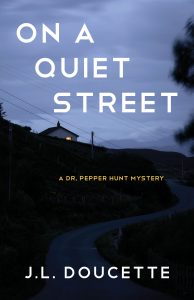Writing The Long Game
 When I was twelve years old I read Betty Smith’s A Tree Grows in Brooklyn, a novel about the internal world of a girl navigating the complicated relationships of her family, a girl who believed “The world was hers for the reading.” Francie’s story touched me deeply and for the first time I related to someone beyond the people in my life.
When I was twelve years old I read Betty Smith’s A Tree Grows in Brooklyn, a novel about the internal world of a girl navigating the complicated relationships of her family, a girl who believed “The world was hers for the reading.” Francie’s story touched me deeply and for the first time I related to someone beyond the people in my life.
I wanted to be able to do this—write a book where readers found themselves.
It was a dream more than a goal and it took a long time to realize it—more than half a century. I wrote poetry, short stories, and free-lance feature articles for local newspapers in the years before my first book was published. I sometimes joked I would be the Grandma Moses of writing.
The American folk artist, Ann Mary Robertson, became famous at the age of 78. She began painting as a child and like many women her life filled up with work and marriage and children, leaving no time for painting. Instead she expressed her talent through the craft of embroidery and the decorative arts. When arthritis pain made embroidery impossible, she returned to painting late in life.
Many women writers have the same experience and I am one of them. The idea for my debut novel Last Seen—a woman disappearing in the Wyoming wilderness—first came to me in 1989. At the time I had two young daughters and a career as a psychologist.
Malcom Gladwell proposed that it takes 10,000 hours to become an expert in any field. In my case that would work out to about five hours a week devoted to writing. That sounds about right, although it was never that consistent, and when writing my novel, could be as much as five hours or more in a single day.
Writing is a long game and it’s critical to embrace apprenticeship. For me that was accepting that it would take a long time to get where I wanted to go, but there were things I could do to keep myself motivated and growing. I wanted to be ready when the time came to write that book. In the years I wasn’t writing my novel, I looked for ways to maintain both my identity and skills as a writer.
I found a way to stay connected to my writing self in Natalie Goldberg’s Writing Down the Bones. She suggests approaching writing as a meditative practice beginning with an exercise she calls First Thoughts: decide on a time to write and keep your hand moving, don’t cross anything out, forget about spelling or grammar, lose control, don’t think and just go for the jugular.
This method freed me up to write short pieces and poetry. I still wondered whether I would ever be able to sustain my attention long enough to create the extended story arc required for novels.
Then I found Julia Cameron’s The Artist’s Way, A Creative Recovery. The book conforms to a twelve-step process of acknowledging the harm done to the creative self and working through the blocks to creativity caused by internalized criticism and shame.
One of the most effective interventions Cameron recommends is Morning Pages, three pages of long-hand, stream of consciousness writing, done first thing in the morning daily. Cameron cautions not to overthink when writing Morning Pages, “just put three pages of anything on the page…and then do three more tomorrow.”
I wrote Morning Pages for years before writing my first novel and consider this process to be one of the critical disciplines that led to publication.
By 2009 both of my daughters had finished school and were living on their own. I still had a full-time psychology practice but there was room for the novel I kept in my head for 20 years.
That fall, I discovered Chris Baty’s No Plot, No Problem., A Novel-Writing Toolkit, packaged in a bright orange box. I had a plot I’d been carrying around for twenty years, so I figured I’d be ahead of the game.
I was intrigued by Baty’s now iconic idea: write a 50,000 word draft of a novel in 30 days. The challenge was to write quickly, without editing, a trick to bypass the critical left brain contribution that crushes the creative right brain flow and stops a writer from finishing a book. I knew I could do it.
I still remember how I felt the night before surrendering to free writing with Nanowrimo, Baty’s National Novel Writing Month which at that time was limited to the month of November. It was Halloween, an eerie time to contemplate such abandon, all the ghosts of self-doubt and fear floating freely. I was afraid I couldn’t do it.
But I did. I wrote the required 1,167 words every day that November and by the end of the month I had a 50,000 word draft. It was exhilarating and a great accomplishment—but it was also only the beginning.
At least I had something to work with—work being the operative word. The task of revising a novel was enormous and terrifying and something I knew nothing about.
It took five years and five revisions before I had a completed novel.
Looking back, I see the similarities between First Thoughts, Morning Pages, and No Plot, No Problem. Each one advocates some form of engagement with free writing and encounters with an unedited thought process, a mind freed from rules and logic.
Like Baty, Cameron and Goldberg, I believe my best writing comes out of the chaos of unorganized thought and the messy richness of experience. When we write often and freely attending to our inner process, we access the unedited thoughts, the sparks that ignite our stories.
Speaking from the heart of the 12-year-old girl who first had the dream, it’s even sweeter for the wait.
—
Rhode Island based psychologist, J. L. Doucette is the author of the Dr. Pepper Hunt Mysteries. Her new novel, On a Quiet Street, is the second in the series following her award-winning debut, Last Seen. After earning a doctorate in counseling psychology from Boston University she moved to southwest Wyoming. The stark landscape of the high-desert, where a constant wind stirs crimes of passion, is the setting for her psychological mysteries.
ON A QUIET STREET
 When the fiancée of a prominent attorney is murdered, Dr. Pepper Hunt joins forces again with Detective Beau Antelope of the Sweetwater County Sheriff’s Department to search for the killer.
When the fiancée of a prominent attorney is murdered, Dr. Pepper Hunt joins forces again with Detective Beau Antelope of the Sweetwater County Sheriff’s Department to search for the killer.
Prosecutor Connor Collin’S dreams are shattered when Stacy Hart is found strangled in their home a month before their wedding. He’s convinced Jack Swailes, the contractor who found the body, killed her in a jealous rage. And Jack looks guilty when he mysteriously disappears later that day.
The investigation takes a different turn when Pepper uses her clinical skills to probe below the surface of the perfect couple’s lives. Chilling secrets and sinister motives that lead back to unsolved crimes with a direct link to Stacy’s murder are finally brought to light.
Category: Contemporary Women Writers, On Writing






























